Cujo Director Lewis Teague Followed Up a Movie About a Killer Dog with 1985's Cat's Eye, a Goofy Anthology About a Heroic Feline
The 1985 horror anthology Cat’s Eye arrived toward the end of Stephen King’s first decade of being adapted for film. It was an auspicious ten-year span that gave the world 1976’s Carrie, 1980’s The Shining, 1982’s Creepshow, 1983’s Cujo and The Dead Zone, 1983’s Christine, 1984’s Children of the Corn, 1985’s Cat’s Eye and Silver Bullet and finally 1986’s Maximum Overdrive and Stand By Me.
It’s tough to beat the one-two punch of Carrie and The Shining, two of the best, most important, and influential fright flicks in horror history.
In print and onscreen, Stephen King was one of the biggest and most trusted names in horror. There’s a reason why filmmakers eager to channel his incredible popularity loved to slap his name on their films.
Cat’s Eye is also known as Stephen King’s Cat’s Eye. King at least wrote the screenplay for the Reagan-era horror anthology based on his short stories “Quitters Inc.” and “The Ledge.”
The 1992 surprise hit The Lawnmower Man borrowed the title and nothing else from a Stephen King short story and then dared to call itself Stephen King’s The Lawnmower Man during its theatrical run.
King successfully sued to have his name removed from The Lawnmower Man when it was in theaters. He was awarded two and a half million dollars.
The author sued and won a second time when the shameless opportunists slapped King’s magical name onto the iconically idiotic cyber-thriller.
Incidentally, readers have asked if I plan to write about the sequels to King adaptations. I think I will tackle those on a case-by-case basis. For example, I will probably write up Pet Semetary Two, but I will ignore the eight sequels to Children of the Corn and the 2009 Syfy remake, but I will cover the 2020 remake.
Prepare accordingly!
Cat’s Eye isn’t just a Stephen King-penned adaptation of the works of the bestselling author; it’s also a tongue-in-cheek celebration of the world he created in his fiction.
The film was directed by Lewis Teague, who made his name directing the cult classics The Lady in Red and Alligator before leaping the big leagues with the 1983 King adaptation Cujo.
Having directed an evil dog movie based on Stephen King’s fiction, Teague moved on to helming a heroic cat movie based on the literature of the King of Horror, which is a clever nickname I just made up.
The framing device of Cat’s Eye involves a wandering stray cat, who plays a minor supporting role in the first two vignettes but figures prominently in the final segment.
King wrote a sequence in which we learn that the heroic cat once lived with a family whose daughter died when an evil troll stole her breath. Alas, the studio nixed this opening because it was too silly.
Teague was understandably devastated but found the strength to carry on.
The film’s framing device is filled with winking nods to King’s work. The cat, for example, barely survives an encounter with a Red Plymouth Fury with a bumper sticker reading, “Watch out for me. I am pure evil. I am Christine.”
I could be mistaken, but I think that references the 1983 novel, and John Carpenter movie Christine, which was about a Red Plymouth Fury named Christine that was pure evil.
King and Teague wink at the audience, hard, by having a weasely creep played by real-life weasel James Woods watch Dead Zone and wonder aloud, “Who writes this crap?”
Cat’s Eye also cheekily references its writer’s previous work, including a rabid Saint Bernard like the one in Cujo, a mother reading Pet Sematary in bed, and an evil gambler reading the 1976 copy of Penthouse, where “The Ledge” first appeared.
Rumor has it that the film originally ended with Stephen King breaking the fourth wall to tell the audience, “I’m Frightmaster Stephen King. When I’m not drinking excessively or snorting cocaine, I wrote the terror tales in this film. You’re welcome” but it was also considered too silly.
“Silly” perfectly describes a framing device that’s ten times goofier than the rest of a movie that, to its credit, does not take itself seriously at all.
Cat’s Eye opens with “Quitters, Inc.”, its strongest segment. As is sometimes the case with King, the story has an autobiographical element. Cigarettes were one of the writer’s many compulsions.
The suffering souls in King’s fiction aren’t necessarily addicted to illicit substances. Thinner’s anti-hero is addicted to food. A Romani curse transforms him from a hefty gaunt to a sentient skeleton. At first, he’s excited but learns that the “cure” to his morbid obesity is worse than the disease.
The same holds true in “Quitters Inc.” James Woods plays Dick Morrison, a sweaty, upper-class smoker. In desperation, he signs up for the titular organization.
Quitters Inc. takes behavioralism to new and homicidal extremes. Dr. Vinny Donatti (Alan King) explains to Dick that Quitters Inc. has a one hundred percent success rate due to their brutal/criminal methods.
If Dick lights up, his family will suffer first. Then he’ll be executed, assassination-style, because the punishment for continuing to smoke is death.
Smoking can be a life sentence as well, but one that takes years, even decades, to kick in.
Quitters Inc. has a surveillance capability that would impress the CIA. They’re everywhere Dick is or might be, and they’re keen to spill his secrets to the big boss.
Vinny succeeds in terrorizing his client into compliance by showing him the stray cat that unites the segments suffering mightily in a room where he is subjected to constant electric shocks.
Dick is scared straight. He’s terrified of inviting the murderous wrath of Quitters Inc., but he still has to fight his compulsion to indulge in his deadly habit.
Woods lends the character a sense of sweaty urgency rooted in his longtime cocaine addiction. Woods snorts a shoebox full of Bolivian Marching Powder every day. That certainly explains his support of Donald Trump.
The troll-hunting feline next appears briefly in a segment based on “The Ledge.” This segment stars Robert Hays as Johnny Norris, a womanizing tennis pro having an affair with Sally Ann (Candy Clark), the wife of gambling-addicted mobster Cressner (Kenneth McMillan).
When Cressner learns of his wife’s infidelity, he forces the terrified man to walk the ledge outside his penthouse. If Cressner’s wife’s lover makes it all the way around, he’ll divorce his wife and give him a large sum of money. If he falls, he’ll be punished with a painful death by falling.
It’s an intriguingly minimalist premise, but the filmmakers keep throwing unnecessary complications into the mix like Cressner making Johnny’s already difficult task harder by spraying him with water and startling him with a horn.
The cat trips up one of Cressner’s henchmen at the exact right time. Johnny is mortified to discover his lover’s disembodied head in the bag of cash after he succeeds in walking the length of the ledge and gets pat revenge by forcing Kressner to make the same perilous journey that he did.
Drew Barrymore, the star of the 1984 Stephen King adaptation Firestarter, stars in the final segment, “General.” It’s the only original vignette, in that King dreamed it up specifically for the movie, and it is not based on one of his short stories.
“General” is based on the old wives tale that cats steal children’s breath when they sleep. In the final story, the cat takes a train down South, where it becomes the beloved pet of a little girl played by Drew Barrymore.
She names the cat General and dotes on it in a way her parents do not understand, particularly after poor General is framed for the murder of the little girl’s pet parrot Polly by a malevolent, cat-sized troll voiced by Frank Welker, who also voiced EVERY ANIMAL IN EVERY MOVIE released in the past fifty years.
The troll is a miniature masterpiece of creature design from the legendary Carlo Rambaldi, a three-time Oscar winner for 1976’s King Kong, 1979’s Alien, and 1982’s E.T.
Rambali created an unforgettable character that charmed Barrymore in E.T. He created a similarly iconic creature to menace her here.
The troll is mischievous, with a high-pitched cackle, knife, and jester hat, complete with bells that give his malevolent presence away. He’s intent on stealing the breath of the sleeping girl, but General gets in the way of his evil schemes.
Cat’s Eye is an early example of a PG-13 horror movie that wants to scare audiences but not with anything resembling graphic violence or gore. It’s a dark comedy as much as a conventional terror tale.
Teague’s second King adaptation is thoroughly engaging, if aggressively inconsequential. King realized by this point that not every movie based on his work had to be ambitious or important. His subsequent filmography is filled with movies that stubbornly do not matter but lack this anthology’s goofy, self-referential charm.

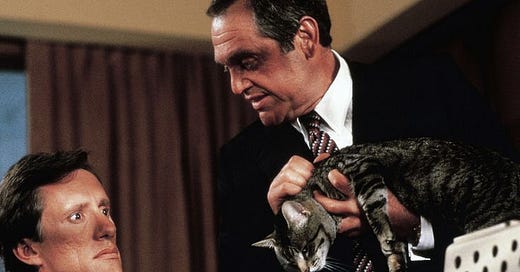


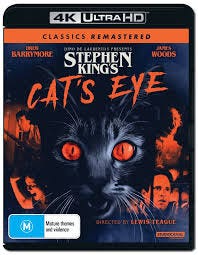
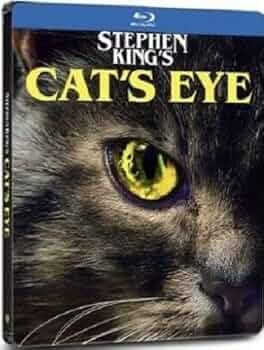

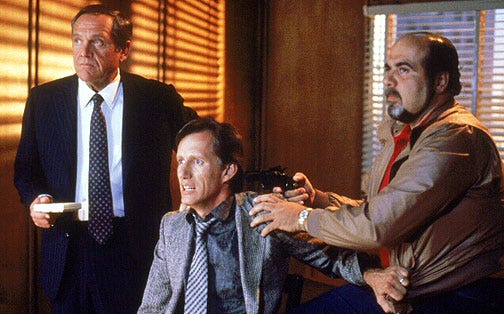
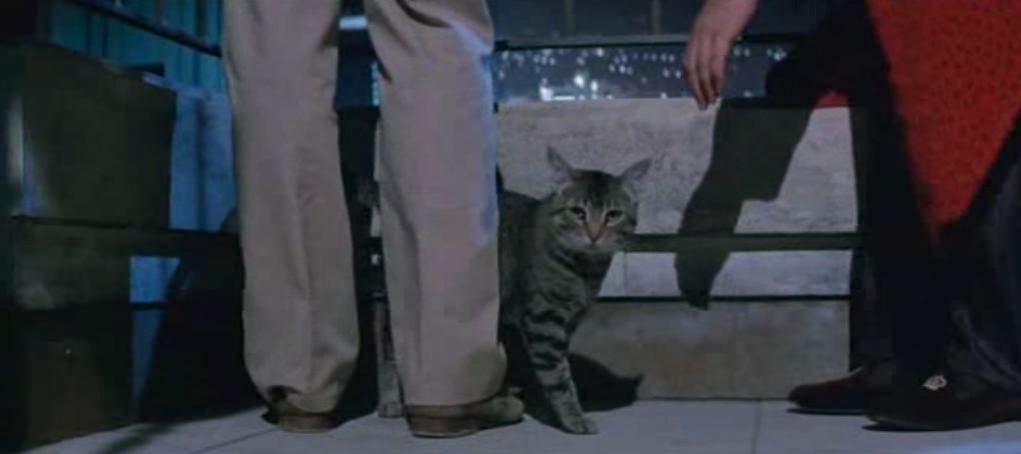
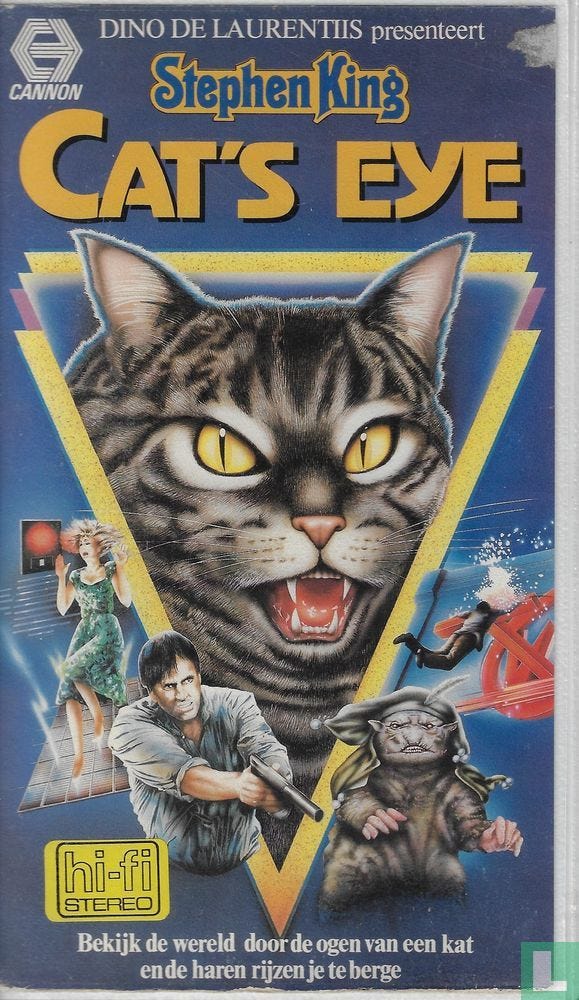

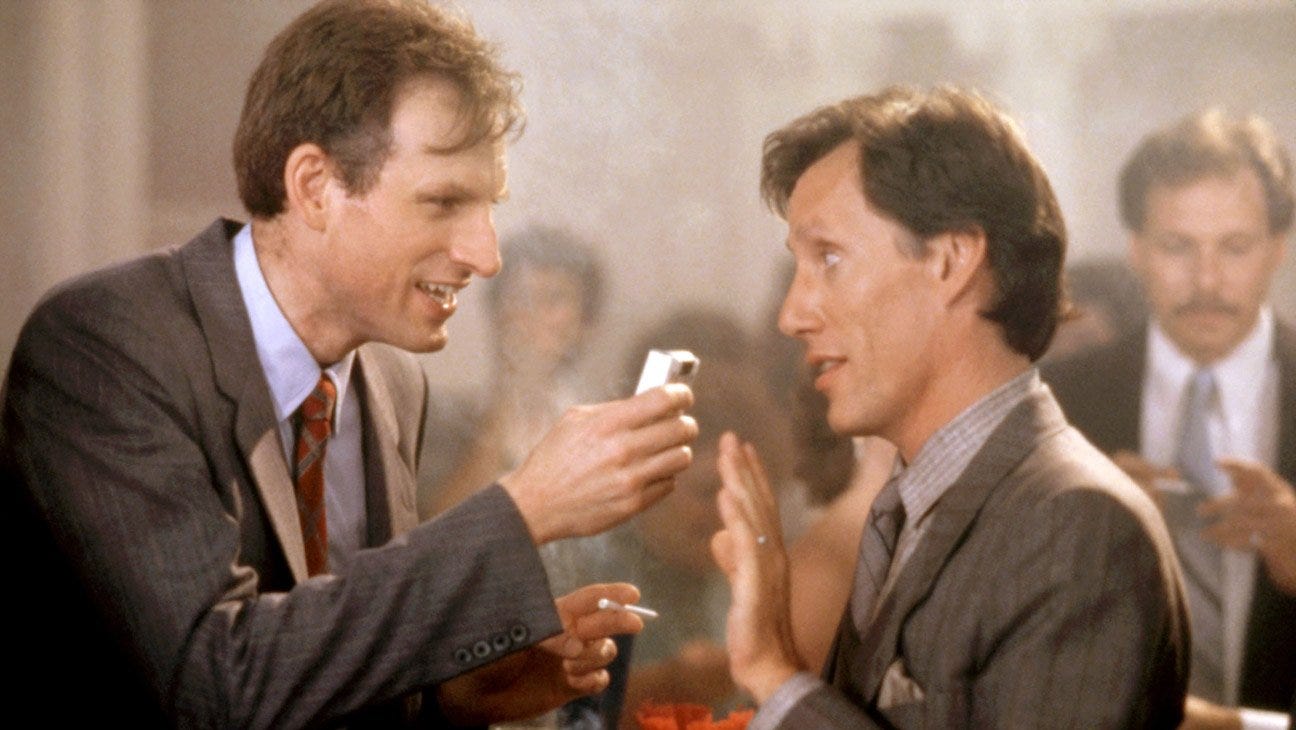
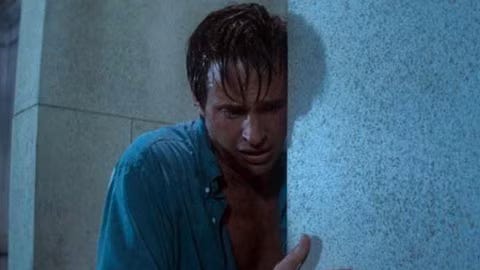
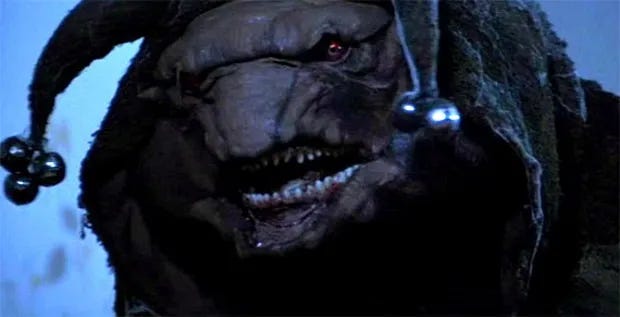
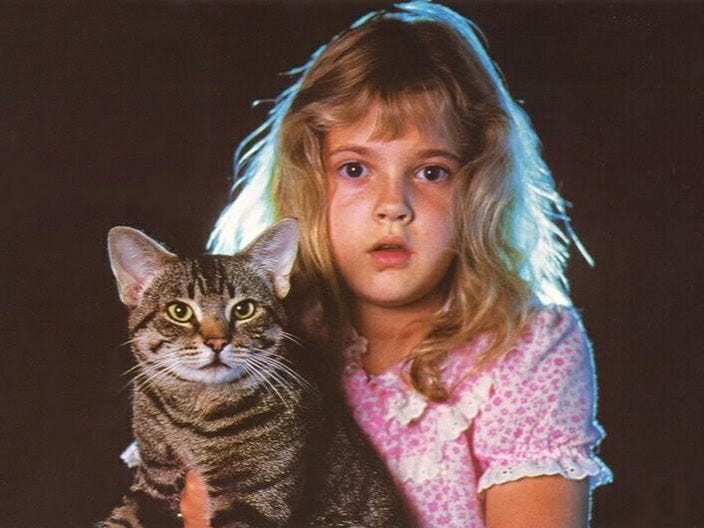
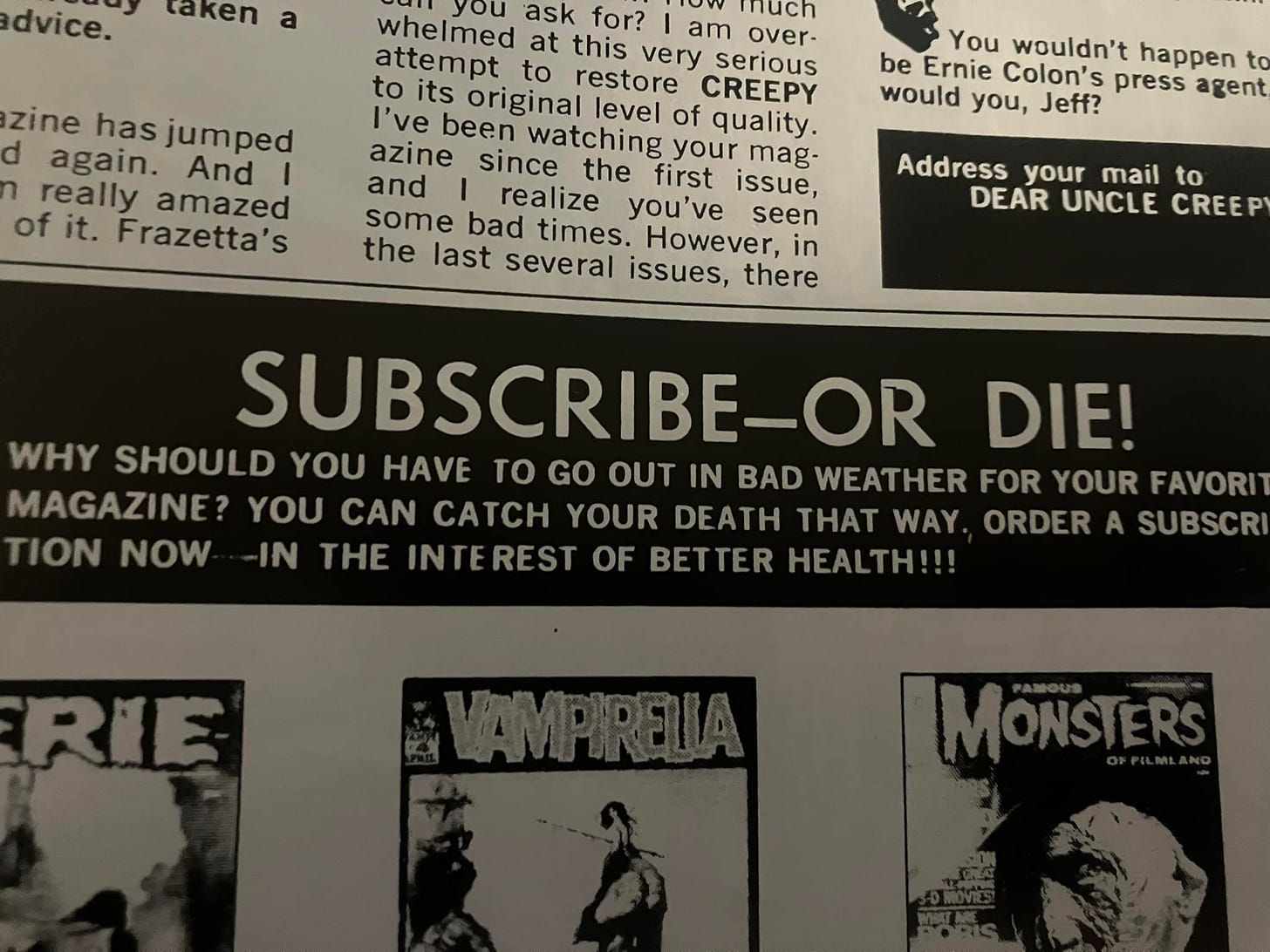
I’ve always felt that King’s screenplay work in the 80s was mostly meant to be deliberate comedy and that the horror was too focused on by audiences and critics at the expense of what King was really doing. Ebert wrote that Silver Bullet was either King’s worst movie or his funniest. King knew what he was doing, in spite of the massive amount of drugs in his system.
"Quitters Inc." was a great story, but like Nathan it did make me marvel at the titular company's apparently massive worldwide surveillance infrastructure. Overall I am a huge fan of King's short stories, and so I have been continuously disappointed at filmmakers' inability to adapt them properly. "Quitters Inc." was one of the better ones.